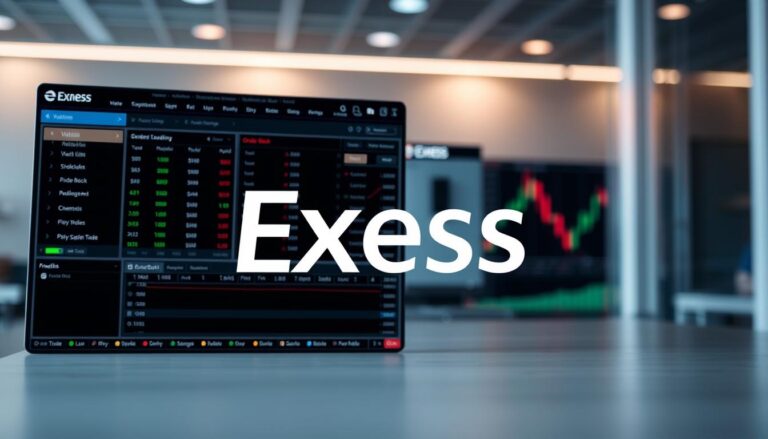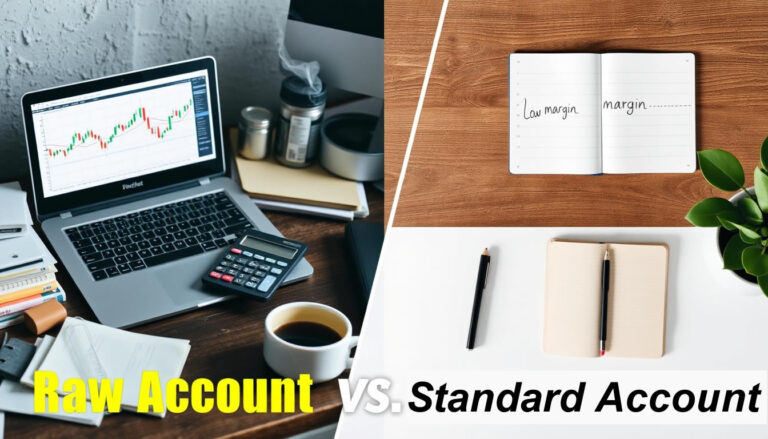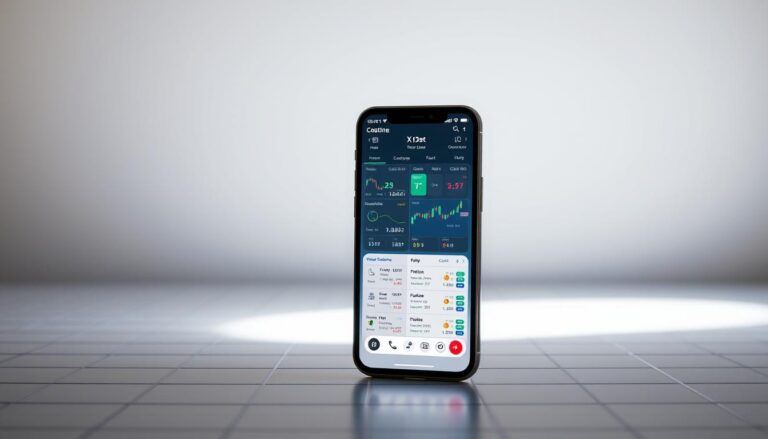Fibo Group vs XTB Comparison Review
Choosing the right trading platform requires careful evaluation of critical features. This review offers a side-by-side assessment of two prominent brokers, analyzing their tools, costs, and regulatory frameworks. Traders seeking clarity on which service aligns with their goals will find this analysis particularly useful.
The evaluation focuses on five core areas: trading platforms, account types, fee structures, security measures, and market access. Each factor is examined using verified data from official sources and real-user feedback. This approach ensures an objective perspective free from promotional bias.
Readers will discover how these platforms handle asset diversity, execution speeds, and educational resources. The comparison highlights standout features while addressing potential limitations. Whether prioritizing low-cost trades or advanced charting tools, this breakdown provides actionable insights for informed decision-making.
Introduction and Overview
Navigating the sea of brokers demands reliable insights tailored to modern trading needs. This analysis cuts through the noise, offering traders a structured evaluation of two established platforms. By focusing on actionable data, readers gain clarity on which service suits their strategy.
Purpose of the Comparison
The review simplifies decision-making by contrasting critical features like spreads and execution speeds. Updated market information ensures relevance, while verified fee structures highlight cost efficiency. Traders receive transparent insights into platform strengths without promotional bias.
Structure and Key Topics
Five core areas shape the analysis:
- Regulatory compliance and security protocols
- Account customization options
- Trade execution reliability
Each section uses fresh industry news and user feedback to maintain objectivity. Whether prioritizing low costs or diverse instruments, the breakdown helps traders pinpoint essential details quickly. Clear organization lets readers focus on what matters most to their goals.
Broker Profiles: History and Regulation
Understanding a broker’s regulatory framework is crucial for assessing trustworthiness. This section examines the operational histories and compliance standards of two established platforms.
Foundational Years and Compliance Standards
Established in 1998, one broker operates under the British Virgin Islands Financial Services Commission (BVIFSC). Its two-decade presence demonstrates stability, while BVIFSC oversight mandates segregated client funds and regular audits. These measures protect traders’ capital during market volatility.
Global Licensing and Market Trust
The second platform holds licenses from multiple jurisdictions, including Belize’s IFSC and Poland’s KNF. This multi-regulatory approach ensures adherence to diverse financial standards. European traders benefit from strict EU directives, while international clients access services through globally recognized frameworks.
Key differences emerge in regulatory impact:
- Long-standing brokers often develop robust risk management systems
- Multi-jurisdictional licenses expand market access but require complex compliance
- Local regulations directly influence leverage limits and investor protections
Both platforms cater to varied experience levels through tailored account features. Strict oversight mechanisms ensure transparent pricing and dispute resolution processes. For traders, verifying a broker’s licenses remains essential before committing funds.
Trading Platforms and Execution Capabilities

Effective trading hinges on platform reliability and execution precision. Modern traders require intuitive interfaces paired with advanced tools to navigate fast-paced markets efficiently.
Platform Offerings and Features
One provider delivers three industry-standard solutions: MetaTrader 4, MetaTrader 5, and cTrader. These platforms cater to diverse strategies, offering algorithmic trading support and custom indicator integration. However, accounts face inactivity fees after 180 days of dormancy.
Competitors counter with their proprietary xStation software alongside MT4. The custom-built platform features drag-and-drop functionality and real-time sentiment indicators. Its streamlined design appeals to newcomers, while advanced charting satisfies experienced users.
Order Execution and Inactivity Considerations
Both services demonstrate sub-100ms execution speeds for standard forex pairs. Market orders typically fill within 0.3 seconds during peak hours, though exotic instruments may show slight delays. Platform choice directly impacts strategy effectiveness:
- MT4 remains preferred for automated systems
- Multi-device access enables seamless strategy management
- Inactivity penalties vary between £5-15 monthly after specified periods
Robust execution infrastructure minimizes slippage during high volatility. Traders should match platform capabilities with their technical requirements and activity frequency to avoid unnecessary charges.
Trading Instruments and Market Diversity

Diverse trading instruments empower investors to build balanced portfolios across multiple markets. Both brokers provide access to core assets but differ in specialized offerings. This section examines their available markets and how they cater to varying investment approaches.
Forex, Commodities, and Crypto Options
One platform specializes in forex pairs and precious metals, offering over 50 currency combinations. Traders can access gold, silver, and crude oil contracts alongside emerging crypto options. These instruments suit those focusing on currency fluctuations and commodity price trends.
The competing service expands into stocks, ETFs, and bond markets. Users trade indices tracking global economies and agricultural products like coffee or wheat. This variety supports strategies combining traditional assets with alternative investments.
Key differences include:
- Specialized forex tools versus multi-asset trading platforms
- Precious metals focus against agricultural commodity availability
- Crypto derivatives versus established stock market access
Traders prioritizing forex might prefer the first platform’s tight spreads on major pairs. Those seeking diversified portfolios could benefit from the second’s stock and ETF options. Both enable risk management through varied asset exposure but cater to distinct trading styles.
Account Types and Registration Processes

Selecting suitable account features forms the foundation of effective trading strategies. This section explores how different account structures accommodate varying experience levels and financial objectives. Traders gain insights into registration efficiency and specialized options like NDD access.
Examining Account Options
One broker provides four distinct account types. The MT4 Cent account suits beginners with micro-lot trading and $50 minimum deposits. Fixed Spread accounts offer predictable costs for risk-averse traders, while NDD accounts enable direct market access with raw spreads.
Swap-free options cater to Islamic finance principles. Registration requires standard ID verification and proof of address. NDD accounts eliminate dealer intervention, appealing to scalpers and high-volume traders seeking transparent pricing.
Account Limitations and Benefits
The competing platform simplifies choices with three core account types. Active traders benefit from reduced fees on high-frequency strategies. Standard accounts require €250 minimum deposits but feature commission-free stock trading.
Key differences include:
- Specialized accounts vs streamlined options
- NDD availability versus fixed commission models
- Customizable leverage up to 1:500
Registration takes under 10 minutes with instant email confirmation. Both services use two-factor authentication for security. Diverse account types let traders align their choices with specific risk management approaches and market preferences.
Spreads, Commissions, and Trading Costs

Understanding cost structures is vital for maximizing trading returns. This section analyzes spread models and fee frameworks that directly impact profitability. Traders must weigh short-term savings against long-term strategy needs.
Variable vs. Fixed Spreads Analysis
One platform maintains variable spreads averaging 0.8 pips on EUR/USD during peak hours. These dynamic rates often benefit scalpers but fluctuate during news events. The other service offers fixed spreads at 1.5 pips, providing predictable costs for risk-averse positions.
Key differences emerge:
- Variable models suit high-frequency strategies with tight market conditions
- Fixed spreads eliminate surprise costs during volatility
- Average 40% spread difference on major forex pairs
Commission Structures and Fee Comparisons
Zero-commission accounts on one platform offset costs through slightly wider spreads. The alternative charges $3.50 per standard lot but maintains lower overnight fees. Both apply inactivity charges, though timelines differ:
- £10 monthly fee after 90 dormant days
- €15 charge following six months without trades
Active traders executing 20+ monthly trades could save £240 annually through tighter spreads. However, occasional investors might prefer fixed-cost models despite higher per-trade expenses. Evaluating personal trading frequency helps determine the optimal cost structure.
Deposit Methods and Withdrawal Procedures

Efficient fund management separates successful traders from those struggling with operational hurdles. Smooth transactions ensure traders capitalize on market opportunities without delays. This section examines how different payment systems affect trading workflows and cost management.
Payment System Variety and Processing Times
One broker supports instant deposits through e-wallets like Neteller and Skrill, alongside credit cards. Bank transfers take 1-3 business days, while crypto payments settle within hours. Withdrawals under $50 may incur a 2% fee, encouraging larger transactions. Users must withdraw funds using the same method as their initial deposit for security compliance.
The competing platform focuses on traditional bank transfers with no deposit fees. Processing times extend to 5 business days for international transactions. While fewer options exist, this approach simplifies reconciliation for tax purposes. Both services prioritize encrypted transactions but differ in flexibility:
- Multiple e-payment choices vs streamlined banking integration
- Faster processing for digital wallets versus slower bank clearance
- Fee structures favoring high-volume transfers
Reliable payment systems minimize downtime between strategy execution and fund availability. Traders should balance convenience with processing costs when selecting their preferred transfer methods.
Customer Support and Analytical Tools

Reliable assistance and smart resources separate top brokers from the competition. Traders need quick answers and sharp insights to navigate fast-moving markets. This section explores how two platforms handle these essential services.
Support Channels and Responsiveness
One broker offers multi-channel support through email, phone, and Telegram. Their YouTube channel provides tutorial videos for visual learners. Response times average under two hours for emails, while phone queries get instant attention during business hours.
The competitor operates 24/5 phone lines but lacks live chat. Weekend email responses may take six hours. Both services include detailed FAQs, but traders needing real-time help might prefer faster options.
Key differences in support:
- Video tutorials versus text-based guides
- Direct messaging through social platforms
- Weekend availability gaps
Analytical Resources for Smarter Trading
Both platforms provide economic calendars and market forecasts. One features real-time sentiment indicators showing crowd psychology. The other offers advanced charting tools with 50+ technical indicators.
These resources help traders:
- Identify emerging trends faster
- Plan entries using historical data patterns
- Manage risks through volatility alerts
Strong customer support builds trust during account issues. Combined with robust tools, these services create smoother trading experiences. Quick problem-solving paired with deep market analysis gives traders a competitive edge.
fibo group vs xtb comparison: Key Differences and Similarities
Distinct features define leading trading services, shaping outcomes for different user needs. This analysis weighs critical factors like platform diversity and client protections, helping traders align choices with their priorities.
Strengths and Limitations
One service excels with extensive account options, earning a 4.1/5 user rating. Traders value NDD access and swap-free accounts. However, inactivity fees apply after six months, impacting casual users.
The competitor scores 3.7/5, praised for strict EU regulation and free educational tools. Limited account types may frustrate advanced traders. Both platforms offer demo accounts, but deposit requirements vary significantly.
Safety Protocols and Strategy Support
Negative balance protection and segregated funds appear in both services. One allows leverage up to 1:500, increasing potential returns and risks. The other enforces 1:30 caps under ESMA guidelines, prioritizing capital preservation.
Key contrasts include:
- Real-time risk alerts versus manual exposure checks
- Automated stop-loss orders on all account tiers
- Third-party audit frequency differences
Experienced traders often prefer customizable leverage for aggressive strategies. Beginners might prioritize educational resources and lower-risk profiles. These differences highlight how personal trading styles influence platform suitability.
Final Thoughts on Selecting Your Ideal Trading Platform
Selecting a trading partner shapes financial outcomes as much as market knowledge. Both services demonstrate distinct advantages: one excels with advanced analytics and diverse account structures, while the other prioritizes strict regulatory compliance and educational resources. Traders must weigh platform agility against long-term cost efficiency.
Key decision factors include execution consistency, asset variety, and customer support responsiveness. Those favoring MT4 compatibility or high-frequency strategies might lean toward customizable leverage options. Investors valuing transparent fee models could prefer platforms with fixed spreads and lower inactivity penalties.
Always match platform strengths to personal goals. Use demo accounts to test tools and verify real-time market data accuracy. Review withdrawal policies and educational materials to ensure alignment with skill development needs.
Ultimately, the right choice balances technical capabilities with risk management preferences. Continue exploring updated broker reviews and industry trends to refine your approach. Your ideal platform should evolve alongside your trading journey.






